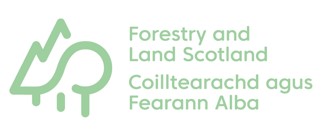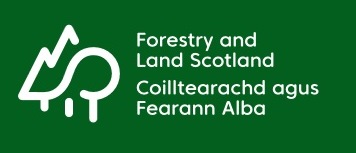Title Page
-
Forest Region
-
Forest Block
- 51 Shankend
- 52 Whitrope
- 53 Wauchope Burn
- 55 Hyndlee
- 56 Lethem
- 57 Peel
- 61 Falside
- 62 Swinnie
- 63 Gair
- 64 Grey Hill
- 65 Craikhope
- 67 Meadshaw
- 68 Crooked Loch
- 69 Gamescleuch
- 70 Newcastleton
- 71 Tinnisburn
- 72 Yair
- 73 Elibank
- 74 Traquair
- 75 Thornielee
- 76 Caberston
- 77 Cardrona
- 78 Glentress
- 80 Cademuir
- 81 Cloich
- 83 Ladyurd
-
Quarry Name & Grid Reference
- Plumbers Knowe - NT298384
- Clove Stell - NT204489
- Henwoodie - NT332096
- Gamescleuch Hill - NT289146
- Plora - NT347360
- Lewinshope - NT364323
- Anderson - NT276414
- Greenhill - NT298419
- Tinnisburn - NY446832
- Swarf - NY511871
- Riccarton - NY540970
- Falside - NT660115
- Mathematicians - NT597049
- Meg & The Bairns - NT607022
- Caberston - NT340396
- Thornielee - NT403372
- Craig Hill - NT438338
- Knowehill Bog NT330088
-
Weather Condition
- Raining
- Snowing
- Overcast
- Fair
- Sunny
- Wind & Rain
- Windy
- Cloudy
-
Prepared by
-
Date of Inspection
-
Last Inspection Date
-
Add Picture of Quarry Frontage or Aerial Picture
Crests
-
Lowering of ground surface at or behind the crest of the overall slope/bench
-
Cracking behind the crest of the overall slope/bench
-
Water running over the crest of the overall slope/bench
-
Water entering cracks behind the crest of the overall slope/bench
-
Surcharging of ground behind the crest of the overall slope/bench
-
Face
-
Bulging of the slope face
-
Settlement of slope face
-
Displacement across joints/bedding planes etc
-
Open structural features inclined >10 degrees out of the face (Sliding & Wedge)
-
Open structural features inclined steeply > 70 Degrees out of the face (Toppling)
-
Loose material on the face
-
Irregular slope gradient
-
Irregularities in plan of the slope face
-
Water issuing from the face
Toe
-
Ground movements at or in front of the toe of the overall slope/bench
-
Water issuing from or in front of the toe of the overall slope/bench
-
Excavations at or near toe of structure not as per design of quarry
-
Other Observations
-
Variations from Design and/or Excavations and Tips rules
-
Recent or active rockfall
-
Recent or active slope failure
-
Other changes in slope condition or features of note
-
Fences/Barriers/Signs
-
Are fences required?
-
Are existing fences in good state of repair?
-
Are barriers/gates required?
-
Are barriers/gates in suitable state of repair?
-
Are warning signs required?
-
Are warning signs in place and in good condition?
-
Select Signage Required
- New FLS Branded 4 x 4 Threshold Sign
- New FLS Branded Boundary Signage
- Other - Give Details
-
Benches & Haul Roads
-
Are benches and haul roads stable and without signs of failure
-
Are haul roads of adequate width and safe gradient
-
Are there excessive ruts, potholes
-
Is edge protection adequate?
-
Action Required (indicate where immediate action is required)
-
Safety and Stability of the excavated slopes/tips
Trigger Factors (Automatic Significant Hazard)
-
Description of a Significant Hazard
-
Significant Hazard Definitions (Regulation 32 – ACOP) - 293. To determine if the hazard is significant, it is necessary to consider how an excavation or tip might feasibly fail, and the likely consequences of any such failure. The likely consequences are crucial when deciding if a particular hazard is significant. The probability of such a failure actually happening is not relevant in this context
294. The Consequences depend on the likely scale of the failure (ie the size of the failure and the rea affected by it) and whether people are likely to be injured.
295. The hazard should be considered significant if such a failure would, directly or indirectly, be:
(a) liable to endanger premises, roadways or other places where people are likely to be found off-site; or
(b) likely to kill or seriously injure anyone.
Tips
300. The hazard should be treated as significant and the tip subject to a geotechnical assessment if it is, or will be:
(a) in a wholly or mainly solid state and not in solution or suspension (ie not likely to flow if not contained); and (i) the area of the land covered exceeds 10 000 sq m; or
(ii) the height of the tip exceeds 15 m; or
(iii) the average gradient of the land covered by the tip exceeds 1 in 12; or
(b) a lagoon containing any liquid or material wholly or mainly in solution or suspension (ie likely to flow if not contained); and (i) the contents of the lagoon are more than 4 m above the level of any land which is within 50 m of its perimeter; or
(ii) the contents of the lagoon exceed 10 000 cubic metres; or
(c) irrespective of the size of the tip, other factors, for example the geology, location or proximity to an excavation, mean that there is a significant hazard as described in paragraphs 293–295.
Excavations
301. The hazard should be treated as significant and the excavation subject to a geotechnical assessment where:
(a) in the case of moderately weak or stronger rock: (i) the vertical height of any individual face is more than 15 m; or
(ii) the overall vertical height of any adequately benched face or slope, measured from toe to crest, is between 15 m and 30 m, and the overall face angle is steeper than 1 horizontal to 1 vertical (45° to the horizontal); or
(b) in the case of weak or very weak rocks and engineering soils, where the vertical height of any part of an excavation is more than 7.5 m, and the overall face angle is steeper than 2 horizontal to 1 vertical (27° to the horizontal); or
(c) the bottom of the excavation is more than 30 m below any surrounding land within 30 m of the perimeter of the excavation (ie the excavation is more than 30 m deep, allowing for any nearby higher ground); or
(d) irrespective of the excavation face height, depth or angle, other factors, for example the geology, location or proximity of a tip, mean that there is a significant hazard as described in paragraphs 293–295. -
Is there a Significant Hazard on the quarry face/benches/crest?
-
-
-
Stockpile Inspection
-
Is the Tip/Stockpile more than 15m high?
-
-
-
Take Picture of Significant Hazard
-
Does the Tip/Stockpile cover more than 10,000m2 (2.5 acres)?
-
-
-
Take Picture of Significant Hazard
-
Is the Tip/Stockpile built on ground with gradient greater than 1:12?
-
-
-
Take Picture of Significant Hazard
Extractive Site Stockpile Details
-
Material Type?
-
Stone Size & Tonnage Available as of today?
-
Stockpile Height?
-
Include pictures of Stockpile/s Height
-
Stockpile Side Slope angle?
-
Include picture of stockpile Angle
-
What is the Underlying Geology if known?
- Peat
- Alluvium, Silts Sand & Gravel
- Glacial, Sand & Gravel
- Boulder Clay
- Bedrock at or near Surface
-
Underlying Ground Slope?
-
Drainage Details?
-
Do you have a Quarry Design Plan?
-
Do you have Design Drawing/Details & Stockpile Location?
-
Add picture
-
Is there any Adjacent Property or feature, (distance and type e.g Field, House 80m etc)?
-
Include picture
-
Do you Deem Stockpile/s to be Significant Hazard?
-
-
-
If yes, detail below
-
Overall recommendations from Inspection
-
Inspectors Name
-
Inspector's Signature:
-
Date:
Signed:
-
Recommendations agreed or varied by QM
-
QM Signature
-
Date:
-
Actions taken to remedy defects





















